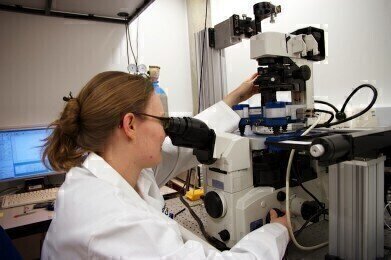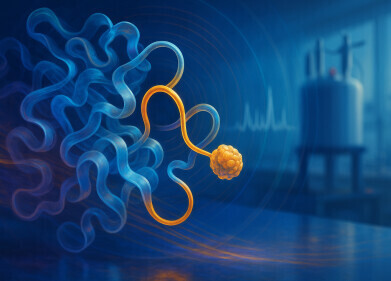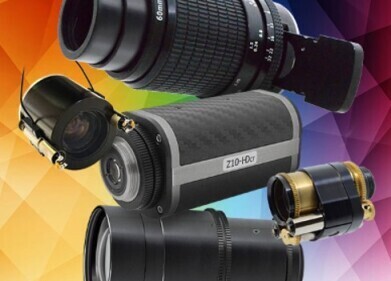Microscopy & microtechniques
Report on the Research Activities of Dr Jochen Guck and his Teams at Dresden Cambridge Universities
Jun 04 2012
The biophysicist Dr Jochen Guck has recently started his Humboldt Professorship of Cellular Machines at the Biotechnology Center of the TU Dresden (BIOTEC) while continuing to lead a team at the Cavendish Laboratory at Cambridge University (UK). His work at BIOTEC focuses on the development of new biophysical approaches for stem cell research, blood cell diagnostics and neuroregeneration. One of his main tools for characterisation of biomaterials are the NanoWizard® systems from JPK Instruments. Unlike many other users, he does not apply them for basic scanning measurements but uses them to study cellular behaviour and to quantify their interactive forces.
Talking about his research, Professor Guck said "Most of our work uses AFM for mapping the mechanical properties of tissues. It is starting to be recognised that cells respond to the mechanical properties of the environment they are in contact with. They can differentiate into different lineages when in contact with stiff or compliant surfaces. Or they migrate towards stiffer areas or softer areas – a phenomenon called durotaxis. We are one of the few groups that have started to consider this mechanosensitivity of cells in the CNS; in the context of neural development and pathological disorders. One important prerequisite for these studies is to know quantitatively, how stiff or how soft CNS tissues actually are so that we can mimic this environment in vitro, and whether there are heterogeneities that cells could respond to. If everything is the same, there is no queue for migration for example. This is where we have pioneered the use of AFMs for the mapping of mechanical properties of CNS tissues with high spatial resolution."
Continuing about his experiences in working with JPK, he said "NanoWizard is perfect for measuring mechanical properties of biological cells and tissues, while keeping the cells and tissues in their physiological environment at the right temperature and their preferred medium (BioCell™). And, we can correlate mechanical mapping with optical microscopy such as bright-field or fluorescence microscopy. This helps us to know what we are actually measuring: which cell type, which state (quiescent or activated) or which area in a tissue."
Digital Edition
Lab Asia Dec 2025
December 2025
Chromatography Articles- Cutting-edge sample preparation tools help laboratories to stay ahead of the curveMass Spectrometry & Spectroscopy Articles- Unlocking the complexity of metabolomics: Pushi...
View all digital editions
Events
Jan 21 2026 Tokyo, Japan
Jan 28 2026 Tokyo, Japan
Jan 29 2026 New Delhi, India
Feb 07 2026 Boston, MA, USA
Asia Pharma Expo/Asia Lab Expo
Feb 12 2026 Dhaka, Bangladesh

.jpg)
-(2).jpg)
















